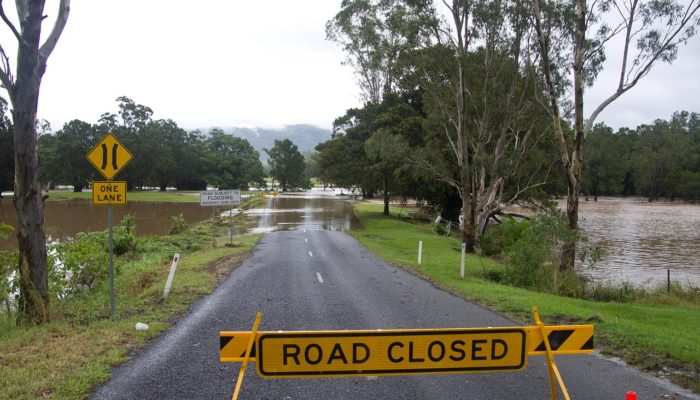Ciao, Ohh, March is already over, well it ended how it started… reading, writing, sleep, repeat, but I can see some light at the end of the tunnel of the paper 😆. This work will be the last part of my thesis, and of course, I will present it at #vEGU21, so stay tuned. Besides research, we ECS reps currently focus on the preparation of network activities for the general assembly. So if ...[Read More]
Seismology
SENSOR: The AWARENESS project
“SENSOR” – stands for Seismological Experiments, Network Systems, Observations and Recovery In this blog series, we share news about recent or upcoming seismic experiments around the globe! The first blog of the SENSOR series follows a young researcher, Dr. Andreia Pereira, from the Instituto Dom Luiz of the University of Lisbon, who is working on the AWARENESS project and has explained to me the ...[Read More]
Cryospheric Sciences
On snowmelt, water security, and a warming climate – Why solution-oriented research matters, now more than ever
1 April 2015: for the first time on record, the chief of the California Cooperative Snow Surveys, Frank Gehrke, had no snow to measure at the Phillips Snow Course near Lake Tahoe at the end of the winter. This was in some ways unsurprising, as California had been in a drought since 2012. But drought was nothing new in the state, and this was the first time on record that snow was completely absent ...[Read More]
Geodynamics
The Sassy Scientist – Will You Be My Co-PI?
In the landscape of very competitive scientific funding, and with STEM research teams sometimes having more people with the name ‘Ben’ than women, Pierre asks what no one dares to even think: Can I increase the chances for my proposal getting funded if I co-write it with a woman? Dear Pierre, The funding game is one of low-odds and it seems you are looking for a loophole. No judgement ...[Read More]
Atmospheric Sciences
What can we do to improve gender diversity in the workplace?
The number of women in science and academia drops with each career step in the fields of science, technology, engineering and mathematics (STEM fields). This systematic under-representation of women towards the top of the academic career path is called the “leaky pipeline”. In Germany about 50% of the students in mathematics and natural sciences are women, but there are only 20% of fem ...[Read More]
Geochemistry, Mineralogy, Petrology & Volcanology
The Volcano & the Ash cloud: Eyjafjallajökull eruption 11 years later
11 years on from the infamous eruption and ash cloud that shut down the European airspace, there are parallels between current travel restrictions and another Icelandic eruption that’s currently in the news. 11 years ago the now infamous eruption of Eyjafjallajökull occurred. I remember that one, the ash cloud, right? Yes, that’s the one. The one that was all over the news, with stunning images of ...[Read More]
Geodynamics
Finding stillness in chaos: The emergence of stable cratons in a hectic young Earth
Today we know the Earth as a tectonically busy planet, shaped by mantle convection and plate tectonics. But this is nothing compared to the earlier phases of planetary evolution. This week, Fabio Capitanio (ARC Future Fellow and Associate Professor at the School of Earth, Atmosphere and Environment at Monash University, Australia) takes us on a modelling tour back to a time when the Earth’s tecton ...[Read More]
Seismology
Earthquake Watch February: Loyalty Islands Mw 7.7
The largest earthquake during the second month of 2021 occurred on February 10th in the western Pacific, specifically to the southeast of the Loyalty Islands and New Caledonia, a seismically active region due to the convergence between the Australian Plate subducting beneath the Pacific Plate (Figure 1). This earthquake (Mw 7.7) was preceded by at least three foreshocks earthquakes M>5.5, which ...[Read More]
Natural Hazards
Tackling the leaks in the transport network with Maria Pregnolato
Transport networks are crucial to our lives, from commuting to work to reach health care facilities, from the transport of goods to leisure travelling. To quote Robin Chase, an American transport entrepreneur: “Transportation is […] the glue of our daily lives. When it goes well, we don’t see it. When it goes wrong, it negatively colours our day, makes us feel angry and impotent, curta ...[Read More]
Geodynamics
Finding support in a four-legged friend
My dog, Roxanne (Roxy for short), has been by my side for my entire graduate career. I adopted Roxy before starting a two-year Master’s program at the University of California, Santa Barbara. She moved with me to the University of Maryland for my PhD program. Now in the second year of my PhD, I cannot imagine PhD life without her. Roxy has helped me navigate the most challenging aspects of academi ...[Read More]









